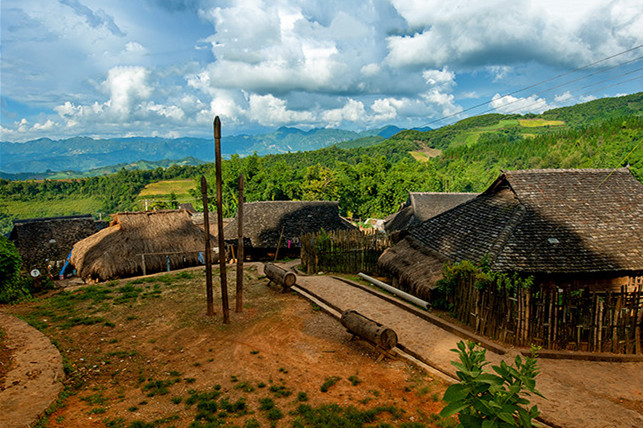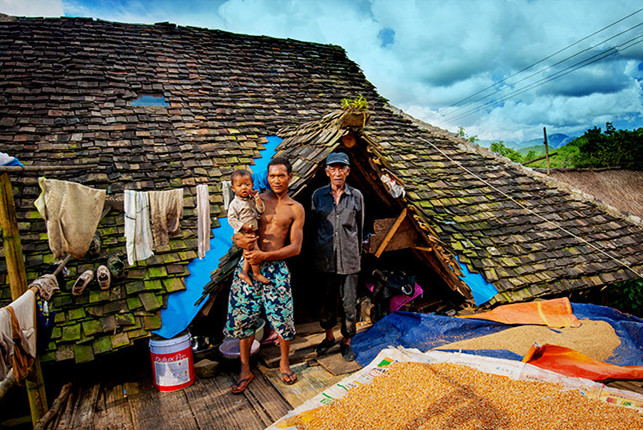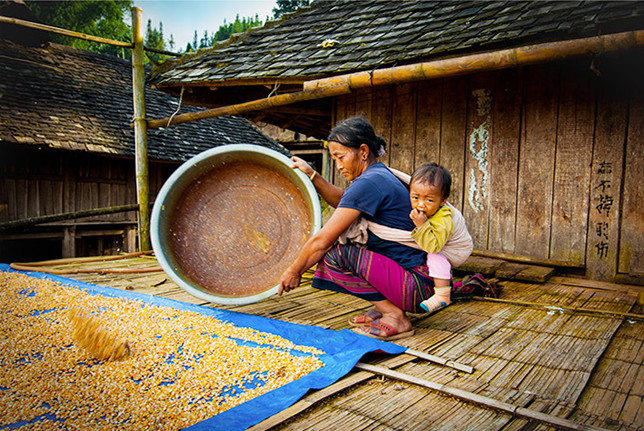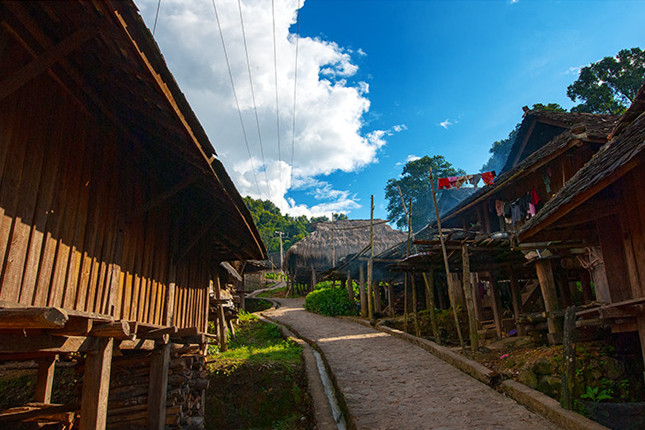Pajie Wa Ethnic Village in Ximeng County, Puer
Overview
Pajie Wa Ethnic Village (爬街佤族村), located in Ximeng County (西盟县), Pu’er (普洱), is one of the best-preserved villages showcasing the Wa (佤族) culture. This ecological village is famous for its natural caves, including Mowo Cave (莫窝溶洞), Daigela Cave (歹格拉溶洞), Wo’a Cave (窝阿溶洞), and Mangxing Cave (芒杏溶洞), which are home to a large population of bats. Visitors can explore these caves, but safety should always come first.
Local Products
The village is renowned for its Pajie High Mountain Cloud Tea (爬街高山云雾茶), characterized by its rich flavor and lasting aroma. Additionally, Ximeng Rice and Buckwheat (西盟米荞) is a geographical indication product. The region also produces traditional Chinese medicinal herbs, such as tuchenchuang (土沉香), and egg fruit (鸡蛋果), which may not be to everyone’s taste. Local delicacies include Wa-style chicken rice, dipping porridge, sour bamboo shoots, and stinky fermented soybean cakes (臭豆豉粑粑). These authentic local flavors are a must-try for visitors.
Location and Community
The Pajie Wa Ethnic Village is situated in Banmu Village (班母村), Mengsuo Town (勐梭镇), just 10 kilometers southwest of the county seat. The village is nestled in the mountains and has preserved the traditional Wa-style residences, architecture, clothing, and customs. With a population of 360 people across 44 households, the Wa ethnic group constitutes the entire community, making it one of the best-preserved Wa cultural villages in Ximeng County. The village is renowned for its primitive mystique, uniqueness, and ancient charm, providing a glimpse into traditional Wa life.
Cultural Heritage
Despite having visited the village, my understanding was limited as I only took a few photos and left quickly. It wasn’t until I returned to Kunming (昆明) that I learned the village is called Pajie, also known as Banmu Village in Ximeng County. This village has been recognized as an ethnic cultural ecological village and was featured in the CCTV program “Borderland Travels” (《边疆行》).
With the development of new rural construction, traditional Wa villages like Pajie are becoming increasingly rare in Ximeng. The village has a history spanning several hundred years, with most of the Wa people residing in bamboo houses and some in earthen flat-roofed houses, divided into two levels: the upper level for living and the lower for livestock.
Preservation of Culture
In addition to its ancient architecture, the village retains many cultural traditions, such as weaving, spinning, and embroidery, which can be observed in the daily lives of the villagers. These traditional practices illustrate the deep cultural roots that remain significant in the community.
Comparison with Other Wa Autonomous Counties
Yunnan has two Wa Autonomous Counties: Cangyuan (沧源县) and Ximeng County. Both are known for their Wa culture as a tourism highlight. While Wengding Village (翁丁) in Cangyuan is famous for its well-preserved architecture and traditional culture, it has become more commercialized. In contrast, Ximeng’s tourism focuses on sites like Longmoya Sacred Land (龙摩爷圣地), with Pajie being relatively unknown. During my visit, I encountered no other tourists, making Pajie a truly untouched ecological village.
How to Get There
By Car: From the center of Pu’er, drive southwest for about 10 kilometers to reach Pajie Wa Ethnic Village.
Public Transportation: Local buses may be available to Ximeng County, from where you can take a taxi or a ride-sharing service to the village.
Travel Tips
- Explore the Caves: Bring a flashlight if you plan to explore the caves, and always prioritize safety.
- Sample Local Cuisine: Don’t miss out on trying various local dishes, as each meal offers a unique taste of Wa culture.
- Engage with Locals: Take time to interact with villagers to learn more about their traditions and daily life.
- Respect Cultural Practices: Be mindful of the cultural significance of the village and ask permission before taking photographs of people or ceremonies.
- Plan for Connectivity: While the village may have limited internet access, consider downloading maps or necessary information beforehand.




















